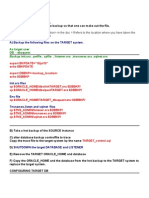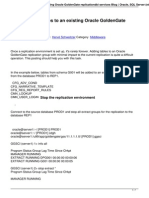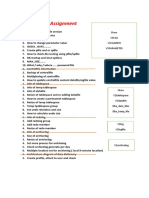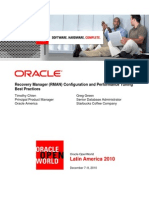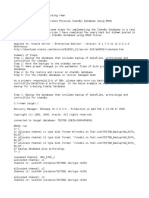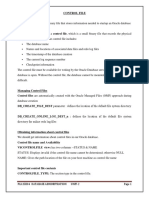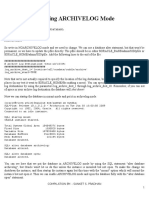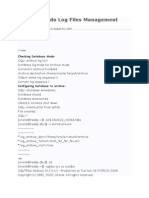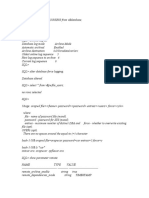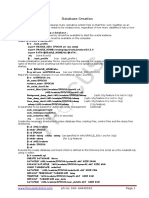0% found this document useful (0 votes)
65 views3 pagesGeneral: Select From Where Alter Select From Where
This document provides information on configuring and managing archive logging for Oracle databases. It discusses:
- The importance of archive logging for production databases.
- Parameters to configure multiple archiver processes.
- Steps to startup a database in archive log mode or noarchive log mode.
- Commands to start, stop, and force archiving of log files.
- A shell script example to automatically move archived log files to a new directory.
Uploaded by
Surender MarthaCopyright
© © All Rights Reserved
We take content rights seriously. If you suspect this is your content, claim it here.
Available Formats
Download as DOCX, PDF, TXT or read online on Scribd
0% found this document useful (0 votes)
65 views3 pagesGeneral: Select From Where Alter Select From Where
This document provides information on configuring and managing archive logging for Oracle databases. It discusses:
- The importance of archive logging for production databases.
- Parameters to configure multiple archiver processes.
- Steps to startup a database in archive log mode or noarchive log mode.
- Commands to start, stop, and force archiving of log files.
- A shell script example to automatically move archived log files to a new directory.
Uploaded by
Surender MarthaCopyright
© © All Rights Reserved
We take content rights seriously. If you suspect this is your content, claim it here.
Available Formats
Download as DOCX, PDF, TXT or read online on Scribd
/ 3







